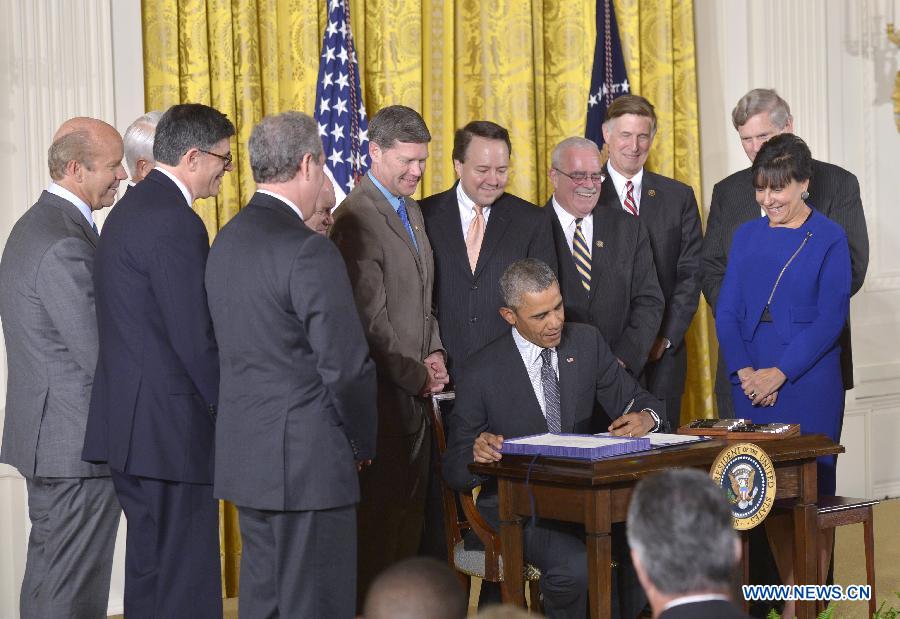Obama signs trade bill, negotiations continue
- By Mitchell Blatt
 0 Comment(s)
0 Comment(s) Print
Print E-mail China.org.cn, July 2, 2015
E-mail China.org.cn, July 2, 2015
 U.S. President Barack Obama signs acts in the East Room of the White House in Washington, D.C., the United States, on June 29, 2015. U.S. President Barack Obama on Monday signed several trade bills into law, including the legislation giving him the so-called fast-track authority to negotiate trade deals with other countries, injecting new momentum to the stalled Asia-Pacific trade talks. [Xinhua/Yin Bogu] |
On June 29, United States President Barack Obama signed two trade bills that will give him the power to negotiate U.S. approval of the Trans-Pacific Partnership. The trade deal would link 12 countries in Asia and the Americas that collectively make up 40 percent of the world economy. More countries may potentially join the TPP in the future, making it one of the largest free trade agreements in the world.
Among the last remaining obstacles to the finalization of the agreement are its provisions on agricultural trade. The United States and Japan are still hashing out their differences, and Canada also has restrictive agricultural policies that might have to change to comply with the TPP.
Japan is especially protective of local agriculture, but the U.S. has historically been forceful in pursuing its interests with Japan. In 2000, the U.S. won special provisions guaranteeing that the U.S. can export 360,000 tons of rice to Japan each year, nearly half the total amount of tariff-free rice Japan imports. Now that the U.S. is negotiating unilaterally with Japan, it is likely that the U.S. will again win special treatment.
In return for allowing Japan to maintain high tariffs on rice and wheat, a reduction in tariffs levied on American beef or an increase in the quota of American rice imports might be up for discussion. Either policy would aggravate Australia, which is also a major source of beef and rice and would be less competitive if the U.S. received special carve-outs.
Earlier this year, Japan proposed cutting its 38.5-percent beef tariff to 9 percent and cutting its pork tariffs by about 900 percent. The tariff rates would still be subject to quotas, raising rates if imports exceed the quota. Japan's top tariff rate for leather products, for example, is 404 percent, and it hits a maximum of 736 percent for cereals. The U.S. counters these with a 40-percent tariff on Japanese leather.
Overall, the United States' tariffs are much lower -- an average of 2.4 percent for animal products, 20 percent for dairy products, 3.3 percent for coffee and tea and 11 percent for sugars. Japan's tariffs exceed those of the United States and Australia in each category, with the highest tariff rate being 98 percent on dairy products. But Canada is even more restrictive of dairy products, levying an average tariff of 246 percent on dairy imports. Canada also levies maximum tariffs of over 200 percent on coffee, cereals, oils, beverages and other agricultural products.






Go to Forum >>0 Comment(s)